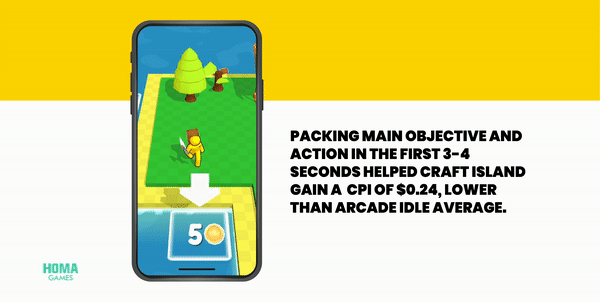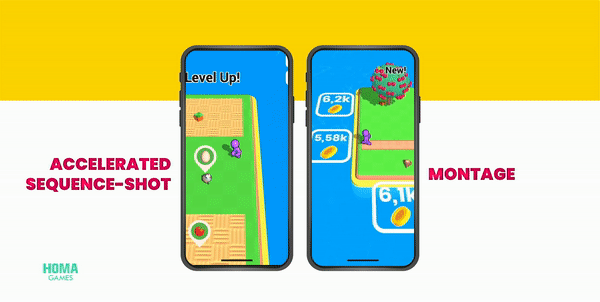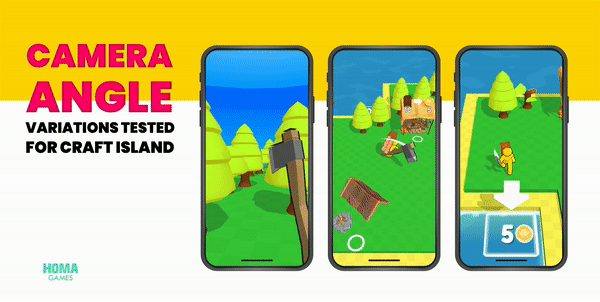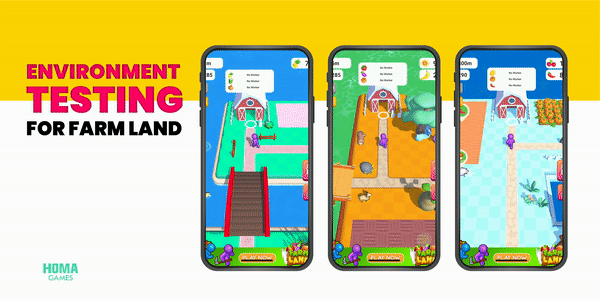· 5 min read
Arcade Idle: 5 Tips for Testing Creatives
For everyone creating Hypercasual games, prototyping and testing is a crucial part of the process. It allows developers to save time, to avoid over-investing, and to be able to iterate accordingly. In addition to testing the gameplay and mechanics, an important part of the process is to evaluate a game’s marketability. And that’s where creatives come in handy.
Creatives are the ads used in a user acquisition strategy to drive installs and, as the first touchpoint with most of the players, they can have a huge impact on the success of a game. In short, the goal of a creative is to give a good idea of a game and to make players want to play it.
Testing with creatives is the best way to rapidly assess the potential of a new product no matter the type of game. But if you’re working with different genres, you may want to consider the particularities of each one. Among the Hypercasual genre, Arcade Idle is a subgenre that incorporates idle and adventure arcade’s main attributes to create games with a casual feel and attractive metrics.
A creative is an opportunity to showcase a game’s best attributes, so once you know what these are, the next step is to know how to bring them forward. In a highly competitive market place, and taking into account our users’ short attention span, you don’t want to miss your shot. Read on to learn where to put your energy and creativity when designing and testing new creatives, particularly for Arcade Idle games.
The pro tips
There are some main elements that can make all the difference when trying to convey what a game is about. Remember that the main message of a game creative is as simple as that: the game. With this in mind, there are a few tests you can do in order to build the creatives that better express this message. The next tips are meant to help you improve a creative’s readability and to reach a larger audience.
1. The three-seconds trick
The message of your creative has to be understandable in the first three seconds. Be straightforward and keep it simple: don’t create a teaser or enigma to solve. If the user understands the content of the game directly, then you have created an effective ad.
Arcade Idle games have a deeper adventure-like gameplay from which discovery and constant improvement through time can be hard to explain, so to focus on the main actions and more satisfying dynamics in these first three seconds is important to keep the player engaged.

2. Iterate on the key features’ message order
The game’s key features are one of the main messages of a creative. You can try presenting them in different orders:
- Sequence-shot: Like a streamer, show the entire game session on your recording. (Extra tip: you can accelerate your recording).
- Montage: If it’s not easy to show your message in a sequence shot, you can find a better order by doing a montage.
For example, Farm Land key features’ message includes showing actions such as upgrading a helper, sowing, watering, harvesting, and expanding. The first creative presents most of them in a sequence shot, and the second one is a montage interlacing the expanding action.

3. Test your camera angles
A camera angle is also a message and a sample of the identity of a game. Testing different camera angles and perspectives will help to improve readability to better express the first important key message: that it’s simply a game. The choice of a camera angle should enhance the clarity of the gameplay.
Arcade Idle games in particular have a large map (by Hypercasual standards) that contains multiple spaces and activities. Instead of guessing if a player is interested in seeing everything at the same time or just wants to focus on some small parts of it, play with different camera perspectives to understand what works better.
The genre usually uses a slightly inclined top view, but don’t be afraid to test with other points of view. After all, you are looking to know what’s the best way to show a game’s mechanics, and also what the players would prefer to see.

4. Colors, environments, and characters variation
Arcade Idle gameplay formula is essentially the same in every game, so when it comes to marketability, the theme and looks matter a lot. When preparing a test, don’t risk it all by using only one environment or one color in your entire batch of creatives. Play with your theme, try different colors or characters. Think of a large audience, and choose your visuals accordingly. Arcade Idle games tend to expand in an open world based in zones in which you can base to bring variety to your users.

5. SFX and music
Arcade Idle games are less action-based compared to its Hypercasual companions, like runners for instance. To inject back that action feeling, create an immersive universe, and improve the credibility of your world you can try adding SFX to actions or the ambient environment. Music is also a simple solution to accompany your ad, and you can also try combining music with SFX.
It’s all about the testing
Creatives are all about trying and testing. With a clear message and keeping in mind the main elements to iterate, you can prepare a nice batch and go to your users for feedback, but remember to take into account the particularities of the genre you are dealing with and its main attributes.
The metrics will tell you what works and will inform your next iterations, so remember not to bet everything on one idea. Keep in mind a broad audience and be open to their reactions to take your creatives to the next level.
